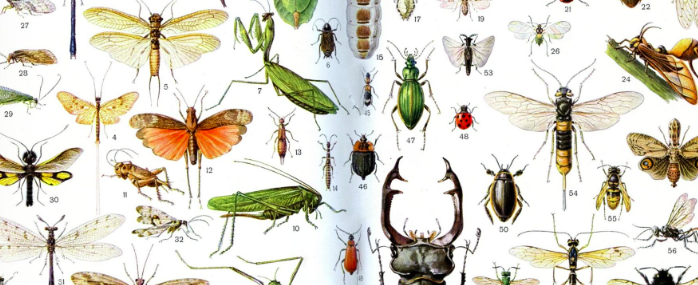
It is often the beauty of insects that prompts people to start a collection. You catch a beautiful butterfly, you want to keep it, and this is the start of a new and exciting hobby!
As your collection grows, you will find that it will give you much more than the satisfaction of having beautiful bugs in a box. It allows to know more about them, while learning to identify them. Over time, you will likely choose to focus your collection on certain insects over others. You may have a preferred group (an order or a family) and your collection will become more specialized.
This scientific hobby requires patience, thoroughness and dexterity. Before placing a specimen in a collection box, the insect must be captured, killed, and mounted. These fragile little animals must be handled with the utmost care. At first, you will probably break a few legs and a wing or two. It’s normal! You must keep trying; your actions will quickly gain confidence with practice.
The insect collection is an important research tool for entomologists, amateurs and professionals alike. To have scientific value, it must contain specimens in good condition, properly mounted and accompanied by labels bearing correct information.
In collections, insects are most often grouped by orders, families, genera and species. We then speak of systematic collections. There are also organic collections, which present insects by habitat, for example, and aesthetic collections, based on the colors and shapes of the specimens.
Collecting insects can become a real passion. If you are feeling the soul of a collector, keep in mind that it is important not to go overboard when harvesting. Even in Quebec, some insects are considered rare or threatened with extinction. Avoid taking multiple individuals of the same species at the same time, unless they are very abundant. Also take the time to observe insects in their environment, while they are alive, and collect as much data as possible about them. These field notes will give your collection greater scientific value.
Entomological boxes and drawers
The Classic Insect Collection consists of an assortment of labeled specimens mounted on pins, spread out and securely attached to the bottom of a specially designed box or drawer.
You will find different models of collector’s boxes and drawers in shops specializing in the sale of entomological material. These are sturdy and airtight containers, made of cardboard or wood, the tops of which are made of a transparent material. The bottom of the container is covered with polystyrene foam.
It is possible to inexpensively make a collector’s box using a stiff cardboard box for letter-size sheets of paper sold in stationery stores. Cover the bottom with a layer of fairly dense foam or corrugated cardboard. You can DIY the cover to attach a piece of thin, clear plastic to it.
To make it easier to spot insects, number the boxes on one side and identify them with a label. When storing, make sure this information is visible without having to move the boxes. These, like drawers, should be stored flat and can be stacked.
Capture methods
Insect hunting will allow you to better understand the life habits of insects and to discover unexpected species. There are a host of different ways to attract and capture insects.
A few simple tips
Several insects can be caught with the fingers. Plastic containers with lids are useful, as are ziplock-type bags. Pliers are an inexpensive catching tool. A soft-bristled brush is handy for picking up larvae.
Butterfly net
This net is mainly used to catch flying insects. Two techniques are used. The first is to capture the insect in flight with a sideways net. The second is to trap the insect in the net by pulling it back over it.
The mower net
This net is used to collect insects in tall grass and shrubs. It must be handled vigorously to sweep the vegetation with rapid lateral movements. These energetic gestures take the insects by surprise.
The troubleau
Intended for the capture of aquatic insects, the troubleau is used by making rapid sweeping movements in the water. You can also lean it vertically at the bottom of a small stream and catch insects carried away by the current.
Threshing
This method consists of beating low branches with a sharp blow to dislodge insects. The hunter has previously taken care to place something under the branches to collect falling insects.
The pit trap
It is basically a container sunk into the ground into which insects fall, like in a pit, and are trapped. You can install it empty, add a bait (honey, bread, oatmeal) or put liquid in it to kill the insects that fall on it.
The light trap
This trap is prepared for night hunting by placing a light source in front of a white surface, for example a sheet stretched between two trees. The hunter must collect his catch, because the trap does not trap the insects.
The vacuum cleaner
This funny tool allows you to catch small insects without hurting them. It is usually formed of a transparent cylinder with two tubes. The flexible suction tube must be placed in the mouth to aspirate the animal through the rigid collection tube.
For detailed explanation on next parts related to the topic please click below on the topic:
How to kill insects? Click here
Preserve specimens or insects Click here
Identification of specimens Click here
Maintenance of an insects collection Click here
Buying insects Click here